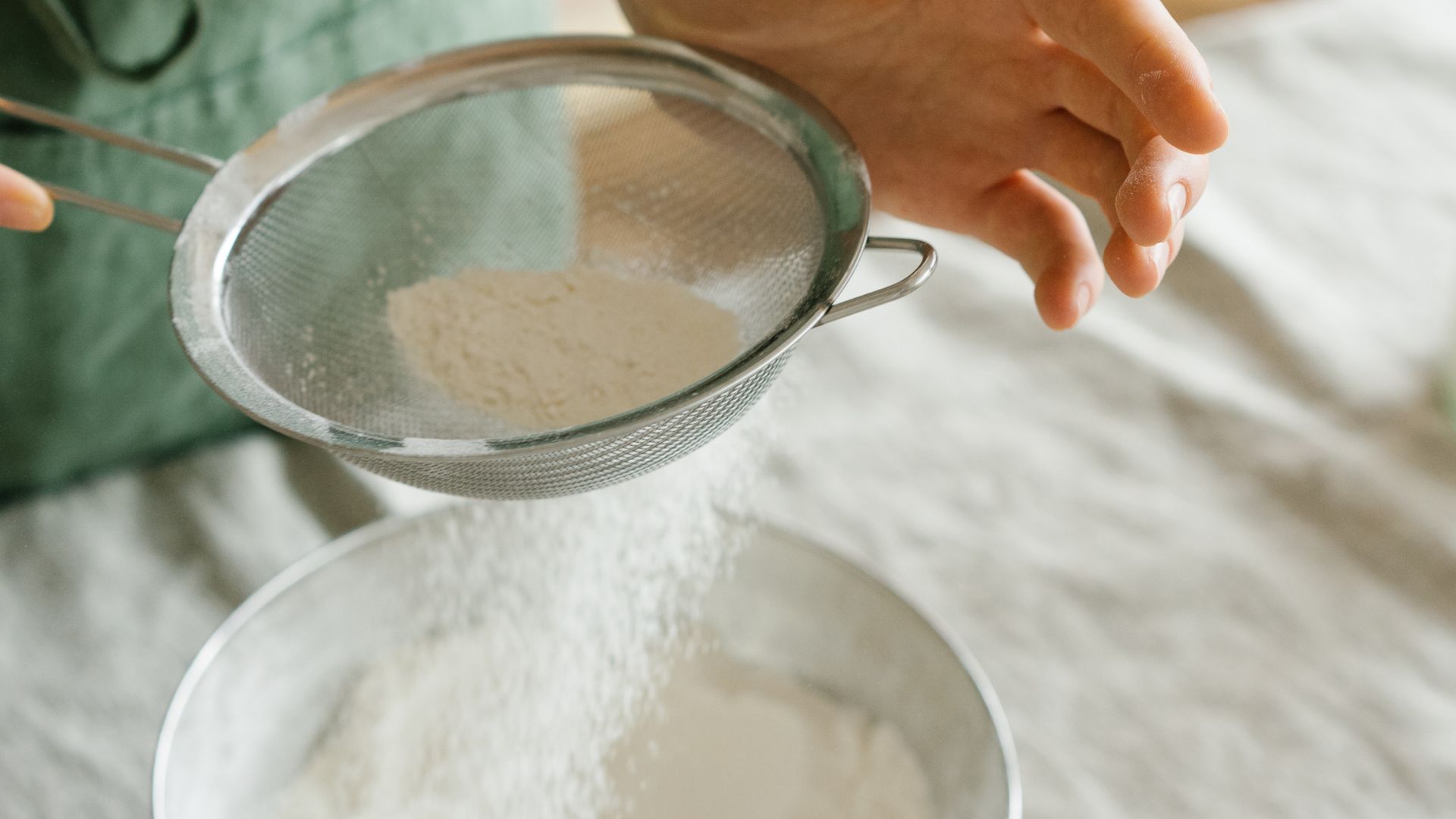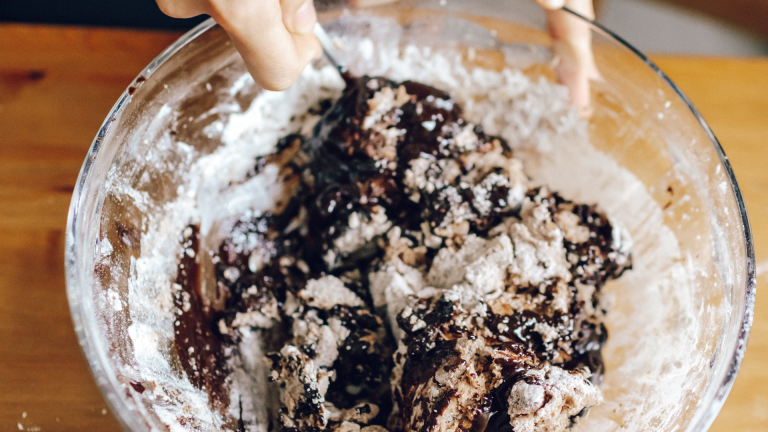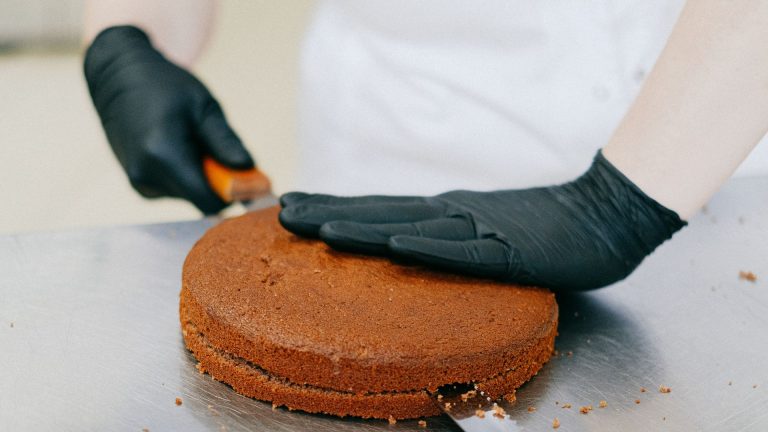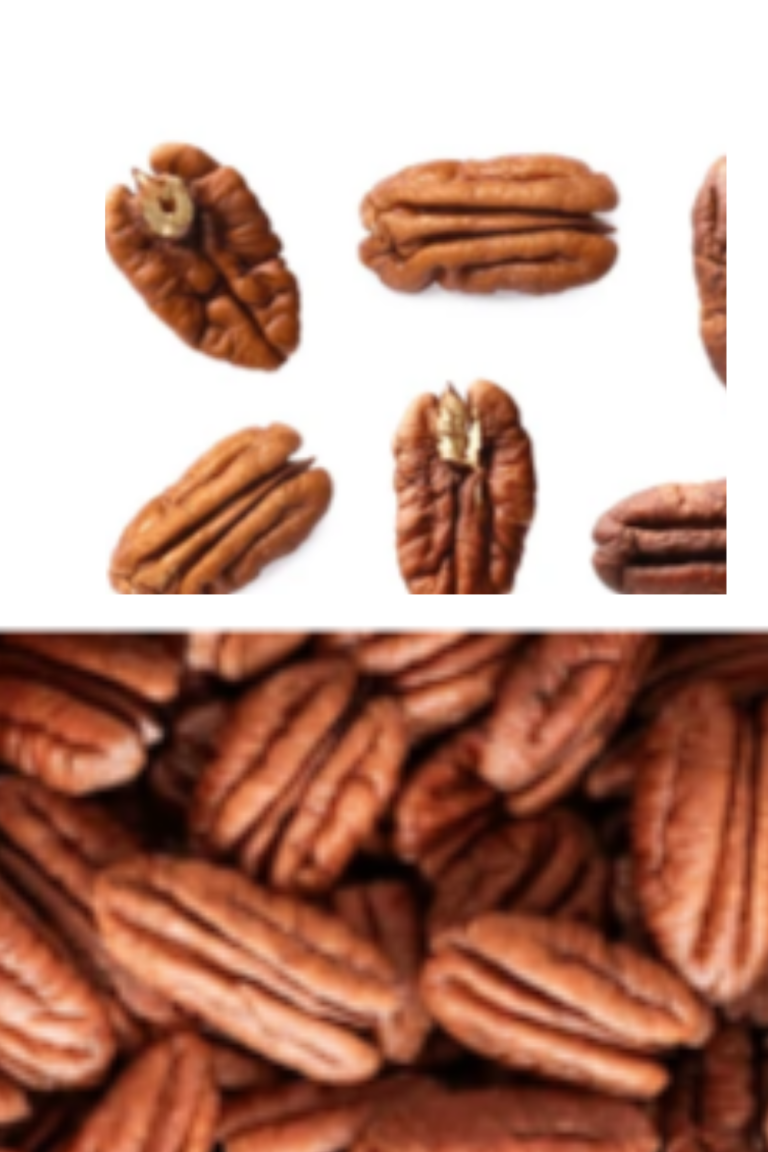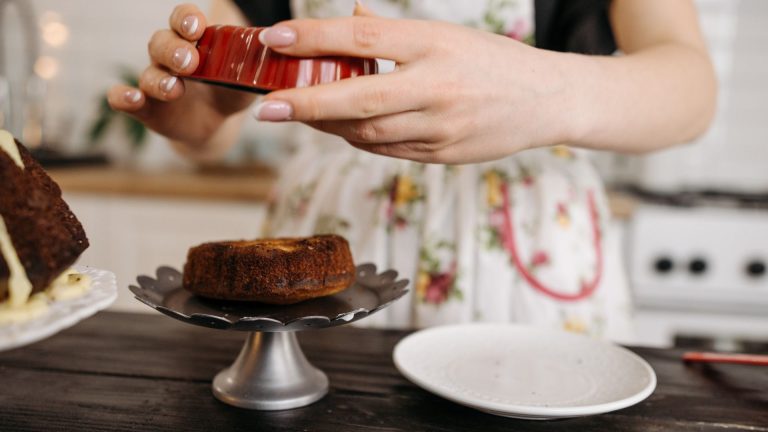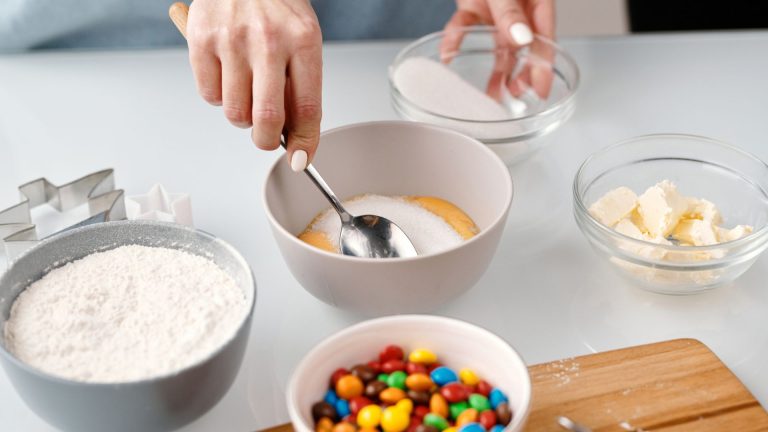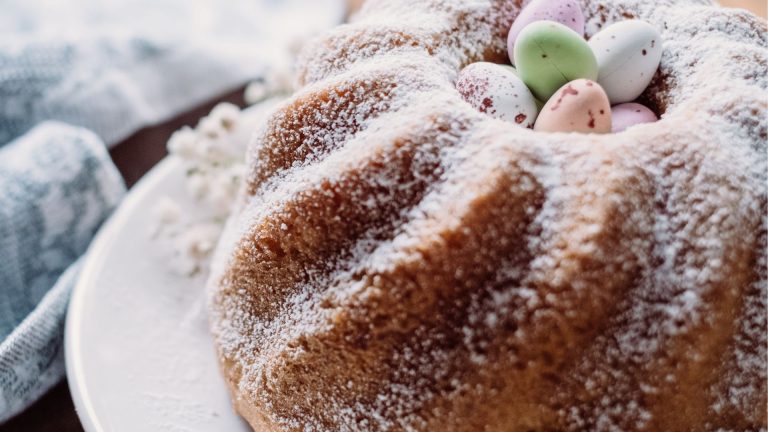SIFT: Sifting role in cake making Explained
In this topic, I’m going to talk about sifting, what it actually means, and why it’s so crucial in cake making based on my own personal experience. Sifting might seem like just an extra step, but it plays a big role in achieving that perfect cake texture and consistency. Let’s dive into what sifting is all about and why you should pay attention to this technique.
Table of Contents
ToggleWhat Is Sifting?
Sifting is the process of passing dry ingredients, like flour, through a mesh or sieve to break up any clumps and incorporate air. This simple action is about more than just separating lumps; it’s about creating a smooth, even mixture that’s crucial for baking success.
When you sift flour, for example, you’re ensuring that it’s light and airy, which helps in creating a better texture in your cake. Sifting also helps to evenly distribute ingredients like baking powder or cocoa powder, so every part of your batter gets the right amount of leavening or flavor.== >> Check out the right cake Sifting tools and ingredients that you need here
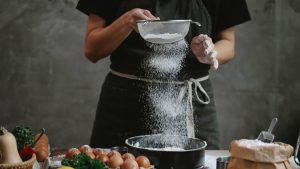
The Importance of Sifting in Cake Making
1. Eliminates Clumps
One of the main reasons for sifting is to break up clumps in dry ingredients. Flour, in particular, can often have lumps that can cause uneven texture in your cake. Sifting ensures that the flour is fine and smooth, helping to create a consistent batter.
2. Aerates Ingredients
Sifting incorporates air into the dry ingredients, which helps to lighten the texture of your cake. This is especially important for cakes that need to be light and fluffy, like sponge cakes or angel food cakes. Airy flour means your batter can rise better and create a more delicate crumb..== >> Check out the right cake Sifting tools and ingredients that you need here
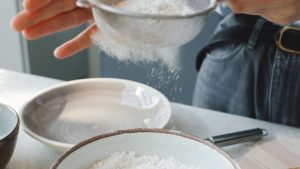
3. Even Distribution of Leavening Agents
If your recipe calls for baking powder or baking soda, sifting helps to evenly distribute these leavening agents throughout the flour. This ensures that the cake rises evenly and has a consistent texture.
4. Reduces the Risk of Over-Mixing
When you sift ingredients like flour and baking powder together before combining them with wet ingredients, you reduce the need for excessive mixing. Over-mixing can lead to a dense cake, so sifting can help avoid that issue..== >> Check out the right cake Sifting tools and ingredients that you need here
How to Sift Properly
To get the most out of sifting, here’s a simple method you can follow:
- Choose Your Sifter or Mesh Strainer: You can use a traditional sifter or a fine mesh strainer. Both work well, but a sifter can be quicker and easier to use..== >> Check out the right cake Sifting tools and ingredients that you need here
- Measure and Sift: Measure your dry ingredients first, then sift them into a bowl. If your recipe calls for a specific amount of flour or other dry ingredients, be sure to sift after measuring, as sifting before measuring can lead to inaccuracies.
- Shake or Tap: If you’re using a sifter, gently shake or tap it to help the ingredients pass through. For a mesh strainer, use a spoon to push the ingredients through.
- Use Immediately: After sifting, use the ingredients right away in your recipe to ensure you get the best results.
Common Mistakes to Avoid
- Skipping Sifting: Some might think it’s an optional step, but skipping sifting can lead to uneven texture in your cake.
- Sifting Too Coarsely: If you don’t sift enough, you might still have lumps in your batter. Make sure the sifted flour is smooth and fine.
- Not Measuring Correctly: Always measure your dry ingredients before sifting. Sifting after measuring is key to getting the correct amount for your recipe.
.== >> Check out the right cake Sifting tools and ingredients that you need here
Sifting Alternatives: Achieving the Same Results Without a Sifter
Sifting is a staple in baking, but if you don’t have a sifter or simply want to try something different, there are several effective alternatives you can use. Each method can help you achieve the same smooth, lump-free, and airy texture in your dry ingredients. Here’s a guide to some great sifting alternatives:
1. Fine-Mesh Strainer
A fine-mesh strainer is probably the most accessible alternative to a traditional sifter. Here’s how to use it:
Method: Place the strainer over a bowl or another container. Add your dry ingredients into the strainer, then gently tap or shake the strainer to let the ingredients pass through.
Advantages: It’s quick and easy to use, and most kitchens already have a fine-mesh strainer.
2. Whisk
A simple kitchen whisk can be surprisingly effective for aerating and breaking up lumps in dry ingredients.
Method: Place your flour or other dry ingredients into a bowl. Use the whisk to vigorously mix and stir the ingredients. This action helps to aerate and break up clumps.
Advantages: It’s a fast method and requires no special equipment. It’s particularly useful if you only need to sift a small amount of flour or other dry ingredients..== >> Check out the right cake Sifting tools and ingredients that you need here
3. Fork
For a small quantity of dry ingredients, a fork can do the trick. It’s an old-school method but can be quite effective.
Method: Place the ingredients in a bowl and use a fork to mix and fluff them. This helps break up any clumps and incorporates some air.
Advantages: Easy to use and doesn’t require special equipment.
4. Food Processor
If you’re working with a larger quantity of dry ingredients, a food processor can be a good option.
Method: Add the dry ingredients to the bowl of the food processor. Pulse briefly to mix and break up clumps.
Advantages: Efficient for larger amounts and can save time compared to manual methods.
5. Blender
A blender can also be used for sifting dry ingredients, especially if you need to process a significant quantity.
Method: Place your dry ingredients in the blender and pulse briefly. This will help aerate and break up clumps.
Advantages: Effective for larger quantities and integrates well with other baking prep work..== >> Check out the right cake Sifting tools and ingredients that you need here
6. Using a Sifter Substitute
If you’re looking for a more specialized solution, you can create a makeshift sifter using household items:
Method: Stretch a piece of fine mesh or cheesecloth over a bowl or container, securing it with a rubber band or string. Add the dry ingredients on top and tap or shake to sift.
Advantages: This method can replicate the functionality of a sifter and is great for when you don’t have one on hand.
Tips for Effective Sifting Alternatives
Ensure Even Distribution: No matter which method you use, make sure to distribute the ingredients evenly to avoid clumping and to incorporate air properly.
Use a Clean Tool: Whether you’re using a strainer, whisk, or any other tool, ensure it’s clean and dry to avoid any contamination or unwanted moisture in your dry ingredients.
Measure Before Sifting: Always measure your dry ingredients before sifting or using any alternative method. This ensures you get the right amount needed for your recipe.
.== >> Check out the right cake Sifting tools and ingredients that you need here
The Impact of Not Sifting: Why This Step Matters in Baking
Sifting might seem like a small detail in baking, but skipping this step can have a significant impact on your final product. Understanding what happens when you don’t sift can help you appreciate why it’s worth the extra effort. Here’s a breakdown of the potential effects of not sifting and how it can affect your baking results.
1. Uneven Texture
Without Sifting: Dry ingredients like flour can develop lumps over time. These lumps are more likely to remain in your batter if you don’t sift. As a result, you might end up with an uneven texture in your cake or other baked goods.
Impact: The presence of lumps can create pockets of dense or dry areas in your baked goods. This uneven texture can make your cake less appealing and may affect its overall quality.
2. Dense or Heavy Baked Goods
Without Sifting: Flour that hasn’t been sifted can be more compact and dense. When you scoop flour directly from the bag, it can become packed down, leading to more flour being used than the recipe intended.
Impact: This excess flour can result in a dense, heavy cake or bread. Proper sifting helps to aerate the flour and lighten it, contributing to a fluffier and lighter texture in your baked goods.
3. Inconsistent Leavening
Without Sifting: Ingredients like baking powder or baking soda are sometimes mixed with flour to ensure even distribution. If you don’t sift these ingredients together, they might not distribute uniformly throughout the batter.
Impact: Inconsistent leavening can cause uneven rising, resulting in cakes or muffins that have uneven textures, sunken spots, or even a flat appearance. Proper sifting ensures that leavening agents are evenly mixed, which helps your baked goods rise evenly.
4. Potential for Over-Mixing
Without Sifting: When dry ingredients are lumpy or not well-integrated, you may need to mix your batter more vigorously to break up the lumps.
Impact: Over-mixing can develop gluten in flour, leading to a tough texture in cakes and bread. By sifting, you reduce the need for excessive mixing, helping to maintain a tender crumb..== >> Check out the right cake Sifting tools and ingredients that you need here
5. Difficulty in Achieving Accurate Measurements
Without Sifting: Measuring flour directly from the bag without sifting can lead to inaccuracies. Compact flour can result in using more flour than the recipe calls for, skewing the ratios of other ingredients.
Impact: This can lead to poor texture, incorrect sweetness, or imbalance in the final product. Sifting before measuring ensures that you’re using the correct amount of flour.
6. Potential for Inconsistent Ingredient Integration
Without Sifting: Other ingredients, like cocoa powder or powdered sugar, can be lumpy and may not mix well with flour if they aren’t sifted together.
Impact: Lumps of cocoa powder or powdered sugar can cause inconsistent flavors and textures in your baked goods. Sifting helps to integrate these ingredients smoothly into the batter.
Practical Tips for Sifting
- Measure After Sifting: If your recipe calls for a specific amount of flour, measure it after sifting to avoid using too much.
- Use the Right Tools: A fine-mesh strainer, whisk, or food processor can serve as effective sifting alternatives if you don’t have a traditional sifter.
- Mix Ingredients Thoroughly: Even if you don’t sift, ensure you mix your dry ingredients thoroughly to avoid lumps and achieve a more consistent batter.
Sifting vs. Whisking: Understanding Their Roles in Baking
When it comes to preparing dry ingredients for baking, both sifting and whisking are essential techniques. Each serves a unique purpose and can significantly affect the outcome of your baked goods. Let’s dive into the differences between sifting and whisking, and understand when and why to use each method.
Sifting
Sifting is the process of passing dry ingredients, like flour, through a mesh or sieve to remove lumps and incorporate air. It’s a classic technique used in baking to achieve a smooth and even texture in your batter.
How to Sift:
Use a Sifter or Fine-Mesh Strainer: Place your sifter or strainer over a bowl.
Add Ingredients: Pour your dry ingredients into the sifter.
Shake or Tap: Gently shake or tap the sifter to let the ingredients fall through the mesh, breaking up clumps and aerating them.
Benefits of Sifting:
Breaks Up Clumps: Removes lumps from flour or powdered ingredients.
Incorporates Air: Helps to aerate the flour, leading to lighter and fluffier baked goods.
Ensures Even Distribution: Mixes dry ingredients like baking powder or cocoa powder evenly, which is crucial for consistent results.
Whisking
Whisking involves beating or stirring ingredients together using a whisk. It’s a versatile technique used to mix, blend, or aerate various ingredients, from dry goods to liquids.
How to Whisk:
Use a Whisk: Choose a balloon whisk or a fork, depending on your needs.
Combine Ingredients: Place the dry ingredients in a bowl or combine with liquid ingredients.
Mix Vigorously: Use the whisk to mix the ingredients thoroughly, incorporating air as you go.
Benefits of Whisking:
Incorporates Air: Helps to lighten the mixture and achieve a fluffy texture, especially in batters and creams.
Blends Ingredients: Ensures that different components, such as flour and sugar, are well combined.
Prepares Mixtures for Baking: Useful for mixing both dry and wet ingredients to achieve a uniform consistency..== >> Check out the right cake Sifting tools and ingredients that you need here
Sifting vs. Whisking: When to Use Each
Sifting:
Best For: Removing lumps from flour or powdered ingredients, and ensuring even distribution of leavening agents.
Typical Use: Sifting flour before mixing it into other ingredients, or sifting powdered sugar or cocoa powder.
When to Sift: Use when you need a smooth, lump-free dry ingredient base, especially for delicate cakes or pastries.
Whisking:
Best For: Mixing ingredients together, incorporating air into batters or cream, and blending ingredients thoroughly.
Typical Use: Whisking together eggs, sugar, and flour for batters, or whipping cream.
When to Whisk: Use when you need to combine ingredients and create a smooth, airy mixture. It’s also useful when incorporating air into a batter or dough.
Combining Both Techniques
Often, both sifting and whisking are used in tandem to achieve the best results in baking. For example:
Sift Dry Ingredients: Start by sifting flour and other dry ingredients to remove clumps and ensure even distribution of leavening agents.
Whisk Ingredients Together: After sifting, whisk the dry ingredients together with wet ingredients to create a smooth and airy batter.
Common Mistakes and Tips
Skipping Sifting: Not sifting can lead to lumps and uneven texture. If your flour or other dry ingredients are clumpy, sifting is crucial.
Over-Whisking: Whisking too much can incorporate excess air, leading to an undesirable texture, especially in batters or creams.
Using the Wrong Tool: Ensure you use a fine-mesh strainer or sifter for sifting, and a balloon whisk for effective whisking.
Comparison of Sifting vs. Whisking
Here’s a handy table comparing sifting and whisking, highlighting their key characteristics and considerations:
| Feature | Sifting | Whisking |
|---|---|---|
| Purpose | Remove lumps, aerate ingredients, ensure even mixing | Mix ingredients, incorporate air, blend components |
| Typical Use | Flour, powdered sugar, cocoa powder | Batters, creams, egg mixtures |
| Method | Pass through a sieve or mesh strainer | Use a whisk to stir or beat |
| Impact on Texture | Smooths out lumps, creates a finer texture | Lightens and aerates mixtures, can create fluffiness |
| Tool Needed | Sifter, fine-mesh strainer | Balloon whisk, fork |
| Pre-Baking Step | Often used before mixing with wet ingredients | Used during mixing to combine or whip ingredients |
| Effect on Leavening Agents | Ensures even distribution for consistent rising | Helps integrate leavening agents but doesn’t affect distribution |
| Impact on Measurement Accuracy | Ensures correct amount by removing compaction | N/A (Does not affect measurement) |
| Common Mistakes | Skipping sifting, not using a fine enough mesh | Over-whisking, not using the appropriate whisk |
| Time Required | Usually quick, but can be messy | Depends on mixture; generally quick |
| When to Use | When precise texture and even ingredient distribution are needed | When combining or lightening mixtures |
Key Notes and Considerations
Sifting:
- Accuracy: Sifting ensures that dry ingredients are measured correctly by removing compacted lumps. It helps achieve a finer texture and consistent batter.
- Texture: Sifting aerates flour or other dry ingredients, which contributes to a lighter and fluffier texture in baked goods.
- Leavening Agents: Helps in even distribution of leavening agents like baking powder or baking soda, ensuring uniform rising of cakes or breads.
- Tools: Requires a sifter or fine-mesh strainer. The choice of tool can affect the efficiency and ease of sifting.
- Impact: Sifting is crucial for delicate baked goods where texture and consistency are key. It’s especially important for cakes, pastries, and certain cookies.
Whisking:
- Blending: Whisking combines ingredients thoroughly and incorporates air into mixtures, which is essential for achieving a smooth batter or light cream.
- Air Incorporation: Helps to aerate mixtures, which can create fluffiness in batters and improve the texture of whipped creams or egg-based mixtures.
- Versatility: Suitable for both dry and wet ingredients. It’s used in various stages of baking and cooking, from preparing batters to whipping cream.
- Tools: Requires a whisk or fork. The type and size of the whisk can influence the efficiency of the mixing process.
- Impact: Whisking is vital for achieving proper consistency in batters and for incorporating air. It’s often used in combination with sifting for the best results..== >> Check out the right cake Sifting tools and ingredients that you need here
Considerations for Using Both Techniques
- Combine Techniques: Often, sifting and whisking are used together. For example, sifting flour before whisking it into a batter ensures a smooth mixture with consistent texture.
- Choose Tools Wisely: Use the appropriate tools for each technique. A fine-mesh strainer or sifter is essential for effective sifting, while a good-quality whisk is key for proper aeration and blending.
- Timing: Sifting is usually done before combining dry ingredients with wet, while whisking is performed during or after mixing to achieve the desired consistency and texture.
- Recipe Requirements: Follow recipe instructions carefully. Some recipes may specifically require sifting to achieve the desired texture, while others may benefit from thorough whisking.
FAQs on Sifting vs. Whisking
1. What is the main difference between sifting and whisking?
Sifting involves passing dry ingredients through a mesh or sieve to remove lumps and incorporate air, resulting in a smoother texture. Whisking involves stirring or beating ingredients with a whisk to mix them thoroughly and incorporate air, improving the texture of the mixture.
2. When should I use sifting in baking?
Use sifting when you need to remove lumps from flour or powdered ingredients, or when you want to ensure even distribution of leavening agents like baking powder. It’s especially important for delicate baked goods where a fine texture is crucial.
3. Can I skip sifting if I don’t have a sifter?
While sifting is beneficial, if you don’t have a sifter, you can use a fine-mesh strainer, whisk, or even a fork as alternatives. These methods can help achieve similar results by breaking up lumps and aerating the ingredients.
4. How does whisking affect the final texture of baked goods?
Whisking incorporates air into the mixture, which can lighten and fluff up batters and dough. It also helps blend ingredients evenly, which is crucial for achieving the desired texture in cakes, muffins, and other baked goods.
5. Can whisking replace sifting?
Whisking and sifting serve different purposes and are not directly interchangeable. Sifting removes lumps and aerates dry ingredients, while whisking blends and aerates mixtures. In many recipes, both techniques are used together to achieve the best results.
6. How can I tell if I need to sift my flour?
If your flour has been sitting for a while or if you notice lumps when scooping it, sifting can help remove these clumps. Additionally, if the recipe specifies sifting or if it calls for a finely textured result, sifting is important.
7. What are common mistakes to avoid with sifting and whisking?
Sifting: Common mistakes include skipping the sifting step, using a coarse strainer, or not measuring ingredients after sifting.
Whisking: Avoid over-whisking, which can incorporate too much air and affect the texture of your mixture, and ensure you use the right type of whisk for your recipe.
8. How can I ensure the best results when using both techniques?
Sift dry ingredients before whisking them into your batter to ensure smooth and even texture. Use a fine-mesh strainer or sifter for sifting and a quality whisk for effective blending. Follow recipe instructions carefully to balance both techniques..== >> Check out the right cake Sifting tools and ingredients that you need here
Final Words
Understanding the distinct roles of sifting and whisking can make a significant difference in your baking outcomes. Sifting ensures that your dry ingredients are smooth and evenly distributed, which is essential for achieving the right texture in your baked goods. Whisking, on the other hand, is crucial for blending ingredients thoroughly and incorporating air, resulting in light and fluffy mixtures.
Both techniques have their place in the kitchen, and mastering them will help you create delicious, well-textured baked treats. Whether you’re a seasoned baker or just starting, paying attention to these details can elevate your baking game and lead to consistently successful results.

Hi!
I’m Mike, the creator of Forum Foodies. In my own personal experience, understanding ingredients is key to great cooking.
Forum Foodies offers guides on various ingredients, from staples to exotic finds. Join our community, share your experiences, and learn from fellow food lovers.
Have questions or suggestions? Email me at info@forumfoodies.com. Let’s embark on this delicious adventure together.
Happy cooking.
Mike/
Related Posts
- PCP: Precooking role in cake making explained
In this post, I’m going to talk about PCP, or Precooking, and its role in…
- SLC - Slicing role in cake making Explained
When it comes to baking, the art of slicing can make or break the final…
- SCO: Scooping role in cake making Explained
In the world of cake making, every little detail matters. One technique that might seem…
- CUT - Cutting role in cake making Explained
In this topic, I’m going to talk about the often-overlooked but crucial aspect of cake…
- BRU: Bruising Role in Cake Making Explained
When it comes to baking, it’s easy to get caught up in the complexities of…
- BSH: Basting role in cake making Explained
In this topic, I'll talk about BSH basting and its role in cake making, sharing…
- TMP: Tempering Role in Cake Making Explained
In this topic, I’m going to talk about tempering, a technique that’s often overlooked but…
- FZ: Freezing role in cake making Explained
In this topic, I’m going to talk about the role of freezing in cake making,…
- GRD: Grating role in cake making Explained
When it comes to cake making, it's often the little details that make a big…
- FRY: Frying Role in Cake Making Explained
In this topic, I'm going to talk about a fascinating technique in cake making: frying.…
- DST: Dusting role in cake making Explained
In this topic, I’m going to talk about dusting and its crucial role in cake…
- PST: Pastry Role in Cake Making Explained
When it comes to baking, pastries are often thought of as their own special category,…
- SCR - Scoring Role in Cake Making Explained
When it comes to cake making, every detail matters, from the ingredients you use to…
- SPN: Spoon role in cake making Explained
Hey there, cake lovers. In this topic, I'm going to talk about the humble spoon…
- PSG - Pasting role in cake making Explained
In this topic, I’m going to talk about PSG (Pasting) and its crucial role in…

